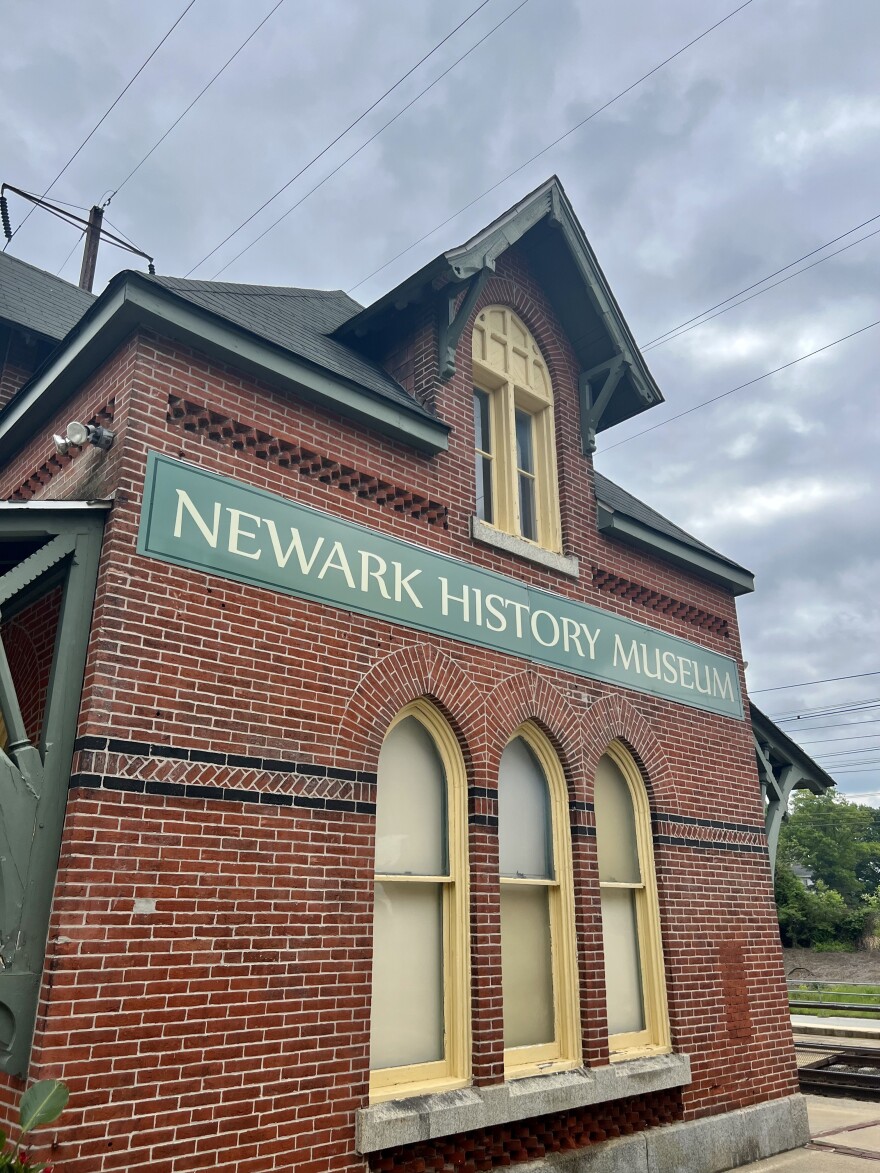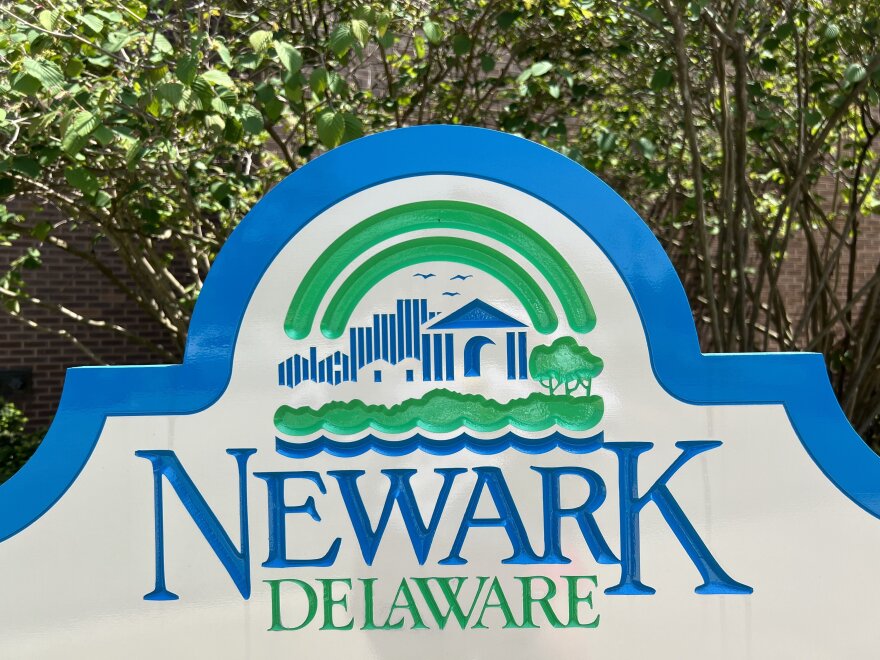From the sound of the train passing near one of the oldest buildings in the area, to the constant hustle and bustle of main street, Newark, Delaware has a variety of personalities.
Founded in 1694, Newark is recognized for its rich history. Whether you’ve lived in town for 50 years or just 4 getting an education at UD, the historical charm is hard to miss. Take a stroll down mile-long Main Street, and you find several buildings are registered national landmarks – 82 of them on Newark properties to be exact - establishments like Klondike Kate’s and Deer Park Tavern to name a few.
Morgan DeMarco, social media director and director of inside marketing for Deer Park, takes pride in being a spot that so many have a connection with.
“All the people that come through here and tell you their experiences from start to finish. We have 80-year-old people that come in here and tell us what this place meant to them when they were our age. They show us where things used to be through the years…everyone, anytime you say Deer Park Tavern, someone's going to have a story. Someone's going to have a memory. And that always brings people back here for whatever reason, no matter what, if you're 21 or 55,” said DeMarco. “And I think we all like to be a part of that experience”

History is a huge part of what makes Newark, Newark. And Newark Historical Society President Kaitlyn Tanis and Secretary Theresa Hessey say building awareness of that history is a priority for their organization.
“I think places like the Deer Park and Klondike Kates and the Academy building like there are certain buildings that are integral to the history and look of the town. So, I think in Newark in particular, there's been a lot of work towards improving the knowledge of the history and of town.” said Hessey. “But I think one of the roles that the museum and the historical society plays is to help preserve some of the history of the town. So that older residents, students, former students can come in and, and be like, ‘yeah, I remember this, I remember that.'”
But that can be challenging when change is also a big part of Newark’s DNA. The population is constantly changing. Each year UD welcomes in on average around 4,000 new undergraduate students. And with such a young demographic in town, Newark needs to serve the college community as well as its residential population.
The Newark Partnership works on small business development, nonprofit development, and cultural and historical programming in Newark. Its executive director Mark Arehart explains how keeping Main Street and the greater Newark area up to date is crucial.
“When you look down, up and down that area of Main Street, you don't see a lot of open storefronts. Many of them are buzzing, attracting, throngs of people to come to the area, spend money, eat whatever they want,” said Arehart. “Look at how much dining we have just on Main Street alone. Look at all the coffee shops we have and then there are plans or roadmaps in place to be able to create more there. This community needs more than just Main Street, needs more than just these original core tenants that make Newark, Newark. The community also needs to expand and to see different things, use different things, love different things.”
The tug of war between these priorities creates a hot topic in Newark – what is more important, preserving history or modernizing the city?
Hessey says as a Newark native involved in preservation, she notices some dissatisfaction among residents like her.
“I think one of the things that has happened is, and what I've heard is that a lot of older Newark residents avoid places like Main Street now because of the traffic and the development,” she said. “As someone who grew up in this town, am I happy with the changes that are happening? Not necessarily. And I'm also not a businessperson. So, I do recognize that there are a lot of people in town with backgrounds in historic preservation who are very opposed to the changes that are happening.”
But Arehart counters that failing to take a step back to look at what Newark needs now could cost the city.
“If you just want Newark to stay the same and never change, you're going to end up with something that happens to smaller college towns, smaller gems where they don't expand. They don't change with the times. They don't look at their community and see how it has changed and what it needs, right? And you can take a very, very large step back without even knowing it by staying stuck in one place,” said Arehart. “I don't think you're going to be able to please everybody. You're always going to make somebody uncomfortable. You're always going to make somebody mad.”
That leaves Newark seeking a middle ground - a Newark that celebrates its history but keeps up with the times and residents’ needs as development continues in areas like the STAR Campus, The Grove on Library Ave, and Main Street.
Both sides believe compromise is possible.

Newark Historical Society president Kaitlyn Tanis says improving communication is crucial – making sure all sides are heard clearly.
“There needs to be a better sense of compromise between the development side versus the historic preservation side. Because oftentimes, one is shut out from the other, and the majority of the time, it's the historic preservation side of things because development and money and profit and the economy normally win over preserving a historic building, unfortunately,” said Tanis. So I think better communication needs to exist between the two.”
And Arehart acknowledges those having those conversations can be hard.
“What makes Newark, Newark? It's historical charm for people who went to UD or who lived in the area, or who visited 20, 30, 40 years ago. We need to make it so they can still hold on to what they love and they don't lose that Newark. But we also can't stay stuck in one period of time, in one way of thinking,” he said “It's a delicate balance and an imperfect balance because you have so many people who love and care about Newark, who think both right? Who think one, who think the other, and it's just about coming together as a region. It's difficult because everybody here cares about Newark. You know, if somebody really wants really great business development throughout the region, they care about Newark. If they're somebody with say, The Newark Historical Society, who really wants to preserve what makes Newark great, what's made Newark great for a hundred years, right? They care just as much about Newark. So, it's about being able to bring those people together and find common ground.”
A common ground that ultimately creates what everyone hopes to see now and in the future; a vibrant, thriving Newark.
“I want this to be a place that is classic, a place that is timeless, A place that is full of rich, embraced history, but also is open for business to be able to grow and expand and give this region really what it needs and what it wants,” said Arehart.



